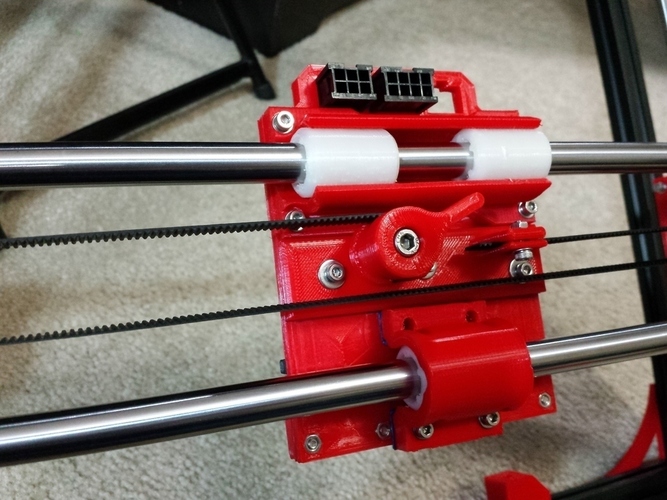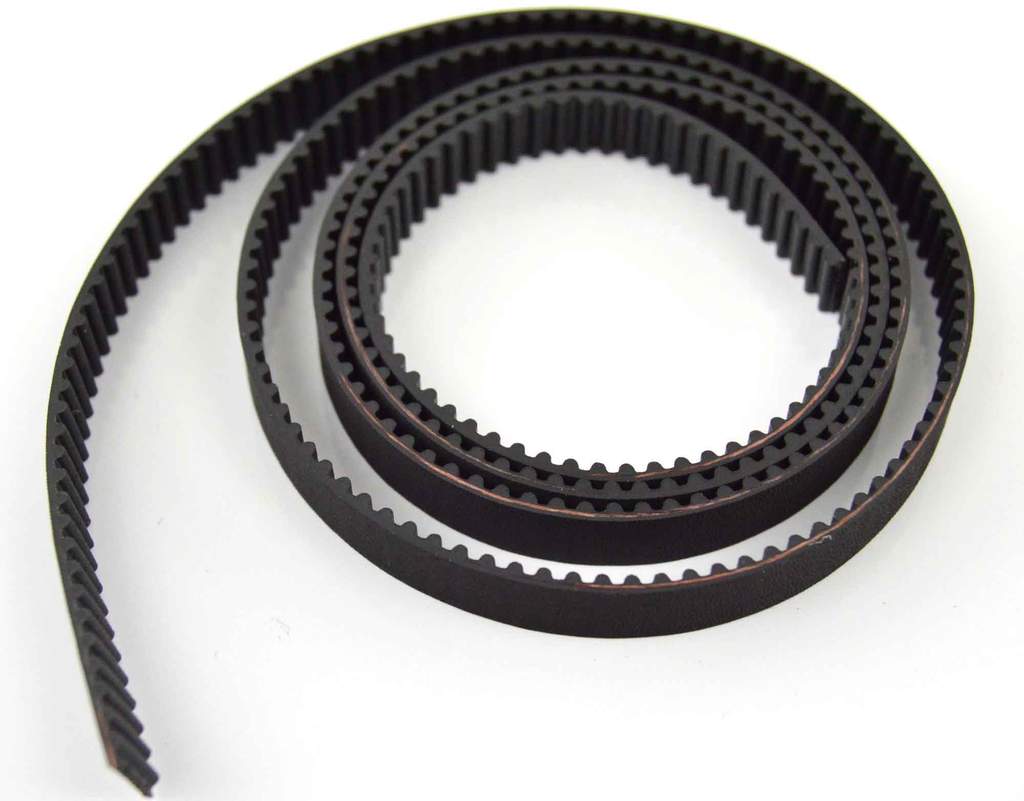When dealing with a 3D printer, accuracy is crucial for obtaining good results. If something comes loose in the middle of the print, or doesn’t move exactly the way it should, it will be clearly visible in the print. Thus, when concerning yourself with a 3D printer belt, it’s very important to make sure that its movements are as controlled and accurate as possible. The use of stepper motors can help provide more advanced control, but it’s useless if the belt slips.
That’s why most 3D printer belts are made to fit along gears, having many measured notches on one or both sides. A drive gear is attached to the stepper motor, and the belt fits into the notches of the gear, preventing it from slipping, and allowing it rotate with the motor. To keep the belt taut, it can be fitted over another such gear, which acts as a pulley. This second gear is then attached to the printer’s frame at the opposite side of the respective axis bar. (Think of the X bar on the Prusa i3, which suspends the print head and runs from one side of the frame to the other on the.)
Some belts come as a circular and uniform piece, while others come as a long strand. The latter require connectors or tensioners to hold both ends together. However, unlike uniform belts, the diameter of belts that require connectors can be slightly adjusted, allowing for a better fit and sometimes an easier installation.
Various print elements are attached to the belt along its axis. When horizontal, an axis bar supports the weight of one or more printer elements, and the belt’s only job is the move those elements along the axis. However, when set up vertically, belts are usually depended upon for support. Sometimes a counterweight is even added to the belt to keep the motor from having to work so hard.
Materials & Sizing

Belts for 3D printers can be made of a variety of materials, with the most common being some form of rubber. Many OEM belts are made of rubber, and have a specific length. When closed, the length is usually exact, or slightly longer than expected, so that it can be adjusted to the appropriate tension. The same goes with unclosed belts. Extra space is usually given so that they can be adjusted in the connector, or attached to a tensioner.
Many belts also have reinforcement, though this isn’t standard. Though the most common and most widely appreciated type of reinforcement is fibreglass, other types of reinforcement can work well, too. Other reinforcement materials include steel or even nylon.
When it comes to belt dimensions, they are often measured in millimeters, as with most elements in 3D printing. Closed belts have measurements of thickness, width, and circumference. Unclosed belts have the same measurements, except they use the term length instead of circumference.
Other measurements and specifications include the thickness and height of the teeth, the distance between the teeth, and even the maximum tension the belt can take without snapping.
Where to Buy

So you need a new 3D printer belt, but where do you get one?
3D printer belts can be found all over sites like Amazon, and with an average cost between $5 to $12, they won’t break the budget like many other 3D printer parts could. Of course, the price is going to depend on several factors, like durability, size, and reinforcements.
Always remember to check sizes before purchasing, and make sure to install them correctly according to the instructions of the printer and the belt. Happy printing!
License: The text of "3D Printer Belt: What to Consider & Which to Buy" by All3DP is licensed under a Creative Commons Attribution 4.0 International License.